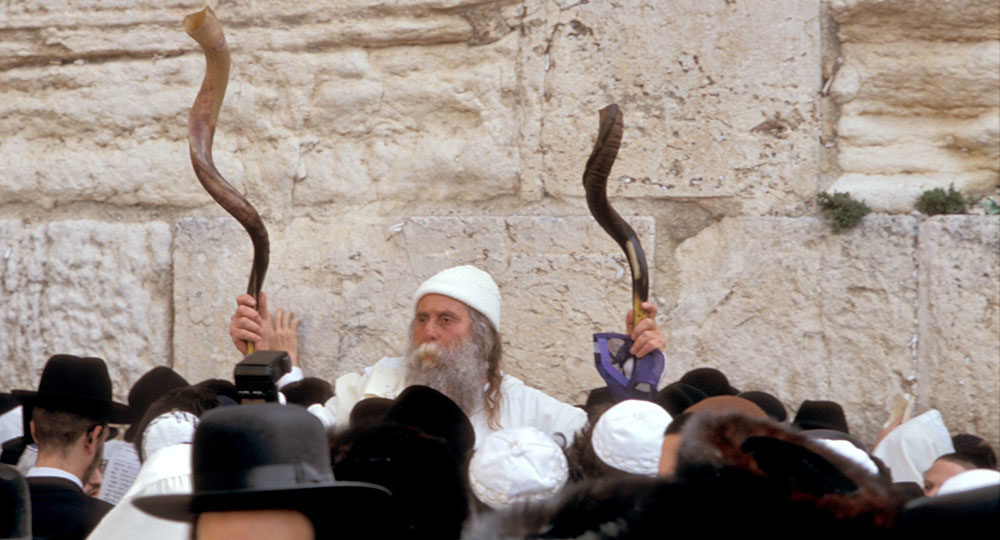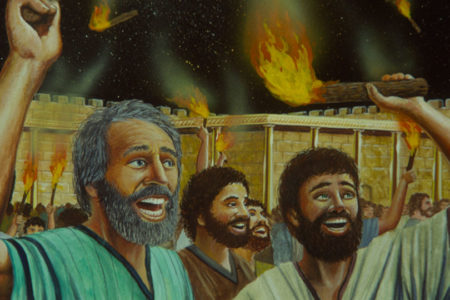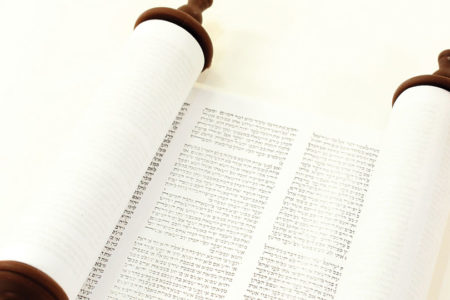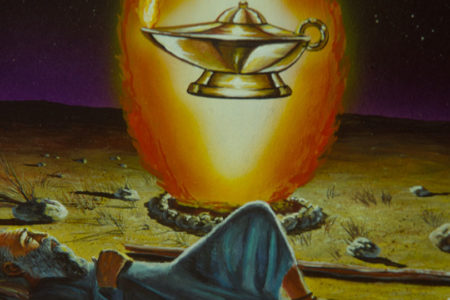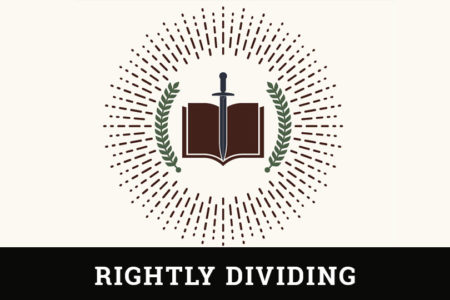A Trumpet in Zion
Israel’s great fall feasts were celebrations that witnessed a pendulum swing of national emotions sweeping from trepidation to exhilaration. These spectacular festivals, around which all national life revolved, were seasons of intense personal interaction with Judaism and Jehovah. They also reflected the summary expectations of Israel, for as the men of Israel came “up to Jerusalem” in obedience to the Lord’s solemn command to “appear before the Lᴏʀᴅ thy God in the place which he shall choose” (Dt. 16:16), priests and people were scanning faces to identify, at long last, the promised Messiah.
Four features were common to Israel’s feasts.
- Historical aspects: Israel was to remember what God had done in the past and His power to deliver.
- Agricultural aspects: A benevolent Father brought the rains and fruits of creation to sustain His people.
- Sacrificial aspects: Sacrifices were central elements at the heart of the feasts. Atonement and heart peace were objects Jews fondly pursued to Mount Moriah.
- Prophetic aspects: All feasts held tokens of future prospects for Israel. At the heart of it all lay the anticipation of the Messiah’s future ministry.
The fall cycle held immense prophetic significance. Trumpets (Rosh Hashanah) was a magnificent foreview of Israel’s ultimate regathering to the land. The Day of Atonement (Yom Kippur) heralded the day of Israel’s final repentance and reconciliation to Jehovah. Finally, Tabernacles set forth her final ingathering under the triumphant hand of the Messiah in preparation for His Kingdom reign.
Biblical Backdrop
Rosh Hashanah was the day designated for the blowing of trumpets: “And the Lᴏʀᴅ spoke unto Moses, saying, Speak unto the children of Israel, saying, In the seventh month, in the first day of the month, shall ye have a sabbath, a memorial of blowing of trumpets, an holy convocation. Ye shall do no servile work therein: but ye shall offer an offering made by fire unto the Lᴏʀᴅ” (Lev. 23:23–25).
Trumpets, historically and typically, signified Israel’s national return to the land of their fathers. But, most significantly, the emphasis was placed upon the regathering that would result in Israel’s embracing the Messiah. Isaiah stated the case clearly: “and ye shall be gathered one by one, O ye children of Israel. And it shall come to pass in that day, that the great trumpet shall be blown, and they shall come who were ready to perish in the land of Assyria, and the outcasts in the land of Egypt, and shall worship the Lᴏʀᴅ in the holy mount at Jerusalem” (Isa. 27:12–13).
In this connection, Isaiah emphasized the trumpets in their association with the lifting up of an ensign (Isa. 18:3). The ensign is identified as the delivering Messiah: “And in that day there shall be a root of Jesse, who shall stand for an ensign of the peoples; to him shall the nations seek, and his rest shall be glorious” (Isa. 11:10).
Nehemiah 8:1–12 provides an account of an observance of Rosh Hashanah. Jews returning from the Babylonian Captivity were assembled on the “first day of the seventh month [Tishri]” (v. 2). As Ezra the scribe read the Torah, “all the people wept, when they heard the words of the law” (v. 9). Their penitential weeping was turned to joy, however, “because they had understood the words that were declared unto them” (v. 12). Trumpets was, for them, a day of national repentance.
Joel carried the theme further, with the future prophetic aspect dominating the text (Joel 2:1–3:21): “Blow the trumpet in Zion, sanctify a fast, call a solemn assembly” (2:15). The coming Day of the Lord will move Israel toward her greatest day of regathering.
The New Year
As Passover initiated the religious year, Rosh Hashanah marked the beginning of the civil year. Thus, it was a day of special significance to the Jewish people. Extreme care was taken to observe the rising of Tishri’s new moon, which would confirm that the new year had arrived. Eyewitnesses were required to certify the rising of the new moon—not one, but at least two were required. In the Second Temple days, these witnesses were heard in the Hall of Hewn Stones at the Temple. When witnesses were properly examined, the proclamation was issued, “It is sanctified,” and the feast commenced. Silver trumpets and shofars (rams’ horns) were blown throughout the day. Jews of the diaspora learned of the new year’s appearance from signal fires lighted on hilltops to send forth the news. Witnesses had seen, the Council had declared, the trumpets had sounded—let the celebration begin!
Weighed in the Balances
Rosh Hashanah, however, was much more than a new year’s day celebration. It ushered in the most solemn season of the Jewish festive year. Jewry believed that Rosh Hashanah was the day when God judged mankind. “Judgment,” they held, “commenced immediately after the Jewish Sanhedrin had settled that the new moon of Tishri had actually risen.”
The ancients portrayed Jehovah as standing before the nation as Judge, with a scale extended before Him. The Lord was “weighing them in the balances.” So solemn was the observance that it was not uncommon to see elderly Jewish men wearing death shrouds on the streets. In this way, they were emphasizing the seriousness of the season.
Rabbinic sources give details about what the people believed was transpiring during Israel’s judgment day.
Three books are opened on Rosh Hashanah, one for the completely righteous, one for the completely wicked, and one for average persons. The completely righteous are immediately inscribed in the book of life. The completely wicked are immediately inscribed in the book of death. The average persons are kept in suspension from Rosh Hashanah to the Day of Atonement. If they deserve well, they are inscribed in the book of life; if they do not deserve well, they are inscribed in the book of death.
Most people, of course, fall into the neither/nor category—neither wholly wicked nor, on the other hand, wholly righteous. So the intervening period between Rosh Hashanah and Yom Kippur was indeed “Awesome Days,” days when people who desperately desired to “deserve well” were fervently employed in doing mitzvahs (good works), which they hoped would elevate them to a state of divine favor and place their names in the book of life.
Rabbis identified a number of significant factors reflected in Rosh Hashanah. Four are of particular interest.
- “Trumpets are sounded at a coronation, and God is hailed as King on this day.”
- “Zephaniah speaks of the ‘great day of the Lᴏʀᴅ.’ Judgment day is a day of the horn of alarm” (Zeph. 1:14–16).
- “Isaiah speaks of the great shofar which will herald the messianic age” (Isa. 27:13).
- “The shofar will be sounded at the resurrection.”
There can be no question that the prevailing thoughts of Jewry at Rosh Hashanah were caught up in judgment, life, death, and resurrection.
Temple readings for new year’s day reflect these themes. Among them are Ezekiel 18:30, “Therefore, I will judge you, O house of Israel, every one according to his ways, saith the Lord Gᴏᴅ. Repent, and turn yourselves from all your transgressions; so iniquity shall not be your ruin.”
Jesus Sounds a Trumpet in Zion
There is strong textual evidence to support the view that the “unknown,” or better, unnamed feast in John 5 was actually Rosh Hashanah. Jesus’ comprehensive declaration of deity touched dramatically the major factors bound up in the Trumpets commemoration.
- The Messiah is Israel’s God/King.
“My Father worketh hitherto, and I work” (v. 17).
“That all men should honor the Son, even as they honor the Father” (v. 23).
- The Messiah is Israel’s Judge.
“For the Father judgeth no man, but hath committed all judgment unto the Son” (v. 22).
The “balance scales” were in the hands of the one who stood before them on the Temple Mount and declared Himself their Judge.
The overwhelming consequences of the Son as Judge are set forth in the words, “the resurrection of life…the resurrection of damnation” (v. 29). The Son held the keys to both alternatives.
- The Messiah is Lifegiver.
“For as the Father raiseth up the dead, and giveth them life, even so the Son giveth life to whom he will” (v. 21).
In light of His surpassing revelations of His Kingship, deity, Messiahship, and role as Lifegiver, He showed the way to a right relationship with the one who alone has the authority to dispense life.
“Verily, verily, I say unto you, He that heareth my word, and believeth on him that sent me, hath everlasting life, and shall not come into judgment, but is passed from death unto life” (v. 24).
Further, He declared that believers can have eternal life as a present possession: “hath everlasting life … shall not come into judgment” (v. 24). Now is the hour, for “The hour is coming, and now is, when the dead shall hear the voice of the Son of God; and they that hear shall live” (v. 25).
No more talk of “Awesome Days” and a never-sure relationship to God and eternity need ever be theirs. The Son was on the scene, and, for those who would hear His Word, the book of life was a sure thing.
Call the Witnesses
Jesus’ statement following these stunning revelations has been misunderstood by many. “If I bear witness of myself, my witness is not true” (v. 31). He was not, in any sense, discounting His veracity as a credible witness and implying that He was less than divine. Quite the contrary. Jesus was facing His opposition with a confirming word, in light of the importance placed judicially on credible witnesses. Remember, it took two witnesses to certify the rising of the new moon. He was about to present double that number by presenting four witnesses to His messianic credibility.
- John the Baptist
“Ye sent unto John, and he bore witness unto the truth” (v. 33).
The one who had declared Jesus to be “the Lamb of God, who taketh away the sin of the world” (Jn. 1:29) was, at first, gladly received by the leaders of the people.
- His works
“The works which the Father hath given me to finish, the same works that I do, bear witness of me” (v. 36).
Perhaps at that very moment the man He had healed at the Pool of Bethesda only hours before stood before them. The man, who lay a helpless cripple in full view of priests and people alike, now stood ramrod straight, confronting them with an irrefutable fact: Jesus of Nazareth had made him whole. It was a “work” none could deny.
- The Father’s Word (vv. 37–38)
“And the Father himself, who hath sent me, hath borne witness of me” (v. 37).
Emissaries from the Temple had doubtless been on the scene when the Father spoke from heaven: “And, lo, a voice from heaven, saying, This is my beloved Son, in whom I am well pleased” (Mt. 3:17).
- The Scriptures (vv. 39–47)
“Search the scriptures…and they are they which testify of me” (v. 39).
“For had ye believed Moses, ye would have believed me; for he wrote of me” (v. 46).
The Son of righteousness had risen with healing in His wings (Mal. 4:2). Sadly, those charged with the spiritual welfare of the chosen people turned deaf ears and blind eyes on Him, His words, His witnesses, and His works.
A Word for Today
Nearly 2,000 years later, Jewish people the world over will celebrate the new year and the ushering in of the ten “Awesome Days.” If there is trepidation at the thought of entering the penitential period approaching Yom Kippur and standing before the divine Judge, it will not consummate in assurances that their names have been inscribed in the book of life. Personal sorrow and well-intentioned mitzvahs can never bring such assurance. Only Jesus is able to say with authority that a believer in Him “shall not come into judgment, but is passed from death unto life” (Jn. 5:24).
